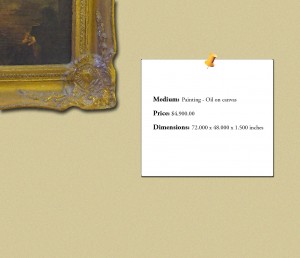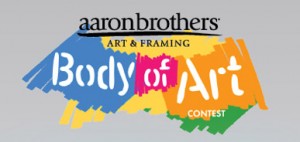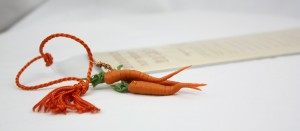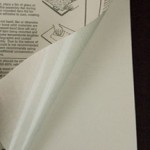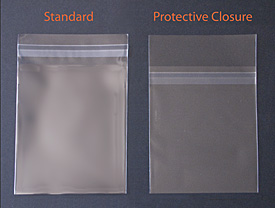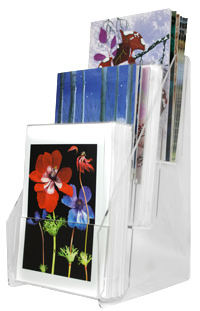 More card and print displays are arriving here at Oak Creek Printworks weekly. We recently added a 3-tier clear acrylic card rack to our existing displays in order to provide an alternative to the larger, more expensive greeting card spinners. The 3-tier rack provides pockets that measure 5-5/8″ wide, and are 1-1/2″ deep.
More card and print displays are arriving here at Oak Creek Printworks weekly. We recently added a 3-tier clear acrylic card rack to our existing displays in order to provide an alternative to the larger, more expensive greeting card spinners. The 3-tier rack provides pockets that measure 5-5/8″ wide, and are 1-1/2″ deep.
If you want to display standard A7 greeting cards and an A7 envelope packaged in a clear plastic sleeve, each pocket comfortably holds 18 individually packaged cards, for a total of 54 cards in the entire rack. With an outside dimension of only 10-3/4″ high, 6-5/8″ deep and 5-3/4″ wide, the card display occupies only a small area of counter or table space. Its modular shape invites a companion rack. Place two, three or more racks side by side for more display space. Because of its versatile sizing, the display works equally well for 5″ x 7″ or 5-1/2″ x 8-1/2″ postcards, booklet, books, brochures, DVDs and more.
During this holiday season, artists and crafters are preparing greeting cards, note cards and a wide range of stationery items for boutiques, craft fairs and art shows. Selling small prints, greeting cards and bookmarks gives artists and crafters a way to market their work and provide visibility to a select audience of people, and a lightweight, compact display is a great way to show your cards.

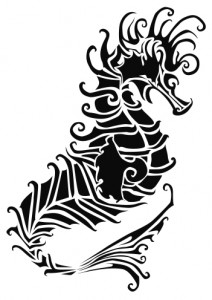 Commercial greeting card publishers have forever pushed the envelope when it comes to greeting card presentation techniques, relying heavily on high end print and print finishing processes. While holographic and lenticular printing are too pricey for the average working artist and crafter, other finishes like die cutting, embossing and engraving are now within reach of those willing to invest in new desktop equipment and take the time to learn how to use it.
Commercial greeting card publishers have forever pushed the envelope when it comes to greeting card presentation techniques, relying heavily on high end print and print finishing processes. While holographic and lenticular printing are too pricey for the average working artist and crafter, other finishes like die cutting, embossing and engraving are now within reach of those willing to invest in new desktop equipment and take the time to learn how to use it.